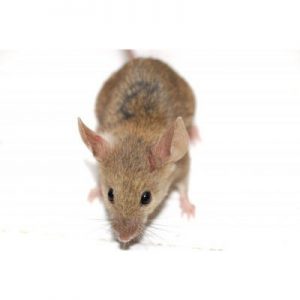Scientific Name: Mus musculus
Common Names: House Mouse
Color: generally gray-brown with a gray stomach
Weight: adults weigh between 17 – 25 grams
Length: up to 20cm, nose to tail
FACT: The house mouse often lives in close association with humans and therefore is termed one of the “commensal” rodents along with Norway rats and roof rats.
HABITS
The house mouse is a small, slender rodent that has a slightly pointed nose; small, black, somewhat protruding eyes; large, mostly hairless ears, and a nearly hairless tail with visible scale rings. House mice are mostly nocturnal animals; although some daytime activity may be seen. Seeing mice during daylight hours does not necessarily mean there is a high population present, which can be true for some other rodents. Mice have poor eyesight (considered colour blind), relying on their hearing and sense of smell, taste and touch.
- Feeding: During its daily activities, a mouse seldom travels more than 30 feet in diameter from their nests to obtain food or water. Mice memorize the locations of pathways, obstacles, food and water, shelter and other elements in their vicinity. This behaviour should be remembered, and is important in proper placement of baits and trapping techniques.
- Hibernation: House mice live in and around homes, farms, commercial establishments, as well as in agricultural lands. The onset of cold weather each fall causes mice to move inside in search of shelter and food.
- Nesting: House mice are excellent diggers and can burrow into the ground or around structures, making their nests, when other shelter is not available. Nests generally have the appearance of a ball of material loosely woven together. These nests are usually 4 to 6 inches in diameter.
- Reproduction: Mice may breed year-round and females mostly have 5 to 10 litters per year, with the average litter size of 4 – 8 pups. Mouse populations can therefore grow rapidly under good conditions.
CONTROL
The best solution for problems with house mice is exclusion. A mouse can fit through any hole the size of your finger or a pencil. Seal entry holes with ¼ inch hardware cloth, sheet metal or metal wool. Pay particular attention to any hole approximately the diameter of a pencil. In some situations, perimeter trapping may prevent a population from becoming established indoors. In addition, avoid storing pet foods and other food products in accessible areas such as garages and eliminate any water sources that may also prove attractive.
Once house mice take up residence indoors, virtually any techniques used to control house mice are effective, including baited and un-baited snap-traps, windup multi-catch mouse traps, glueboards, and anticoagulant rodenticides. Their inquisitive nature makes them easy to trap. Often times, a rodent infestation is underestimated, ensure to use a sufficient amount of devices for the job.
At Poulin’s Pest Control, we’re experts in elimination of pest problems. If you want to take care of the problem yourself, we carry a number of products to assist with many pest problems, and if you need our help, our technicians are standing by. Remember – there’s no foolin’ with Poulin.

